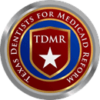 In the last edition of TDA Today, the Texas Dental Association goes to bat for dental Medicaid providers on two issues.
In the last edition of TDA Today, the Texas Dental Association goes to bat for dental Medicaid providers on two issues.
First, the publication reported that the TDA’s Council on Public Health and Access to Care met with HHSC (HHSC, HHS; tomato, tomahto) reps from the Quality Oversight, Finance and the Medicaid/CHIP Services Department. They discussed the state requirement of including financial risk in 2% of provider payments in 2018 which was driving DentaQuest to go around and promote a capitation plan to larger providers a few months ago, upsetting smaller providers.
Dentists cannot be forced into VFP plans
HHSC reps reassured the TDA that “that DMOs cannot force dentists into at-risk payment models” and that the “DMOs are to seek “willing partners for risk-based VBP (value-based payments).”
The TDA now suggests that providers “proactively contact DentaQuest and MCNA Dental to discuss what type of specific alternative payment model may be a good fit for their dental practice. Quality measurement in risk-based VBP is highly customizable and the state reaffirmed that dentists can negotiate quality measures with the dental plans that work best for them.”
Again, to reassure Medicaid providers, the article states that the “state doesn’t intend for value-based healthcare to financially penalize dentists. Instead, HHSC sees the changes as rewarding dentists for improving their patients’ oral health as opposed to simply paying dentists for the volume of services performed.”
Apparently, there will be more in the October legislative issue of the Texas Dental Journal.
Will HHSC award more than two contracts?
There is also an article on the HHSC DMO request for proposals which closes TODAY.
Prior to the RFP being issued, the TDA apparently met with Charles Smith, HHSC executive commissioner, and Stephanie Muth, the state Medicaid director, “to outline the Association’s suggested improvements for the delivery of Medicaid and CHIP dental services in Texas.”
One comment stands out in the article. In reference to the fact that the RFP allows HHSC to choose a minimum of two contractors, the TDA feels that “there are challenges in potentially dividing members among multiple contractors, and since the program is functioning well with 2 contractors, there appears to be no real incentive for the state to take on this administrative complexity.”
That was our conclusion as well. We hope this is not the case as even our informal survey of Medicaid dental providers shows that a large majority wants to see new DMOs in the field so they have choices.
We have heard rumblings from the legislature that awarding only two DMOs is not what they would like to see either.
It will be interesting to find out which companies stepped up to the plate. We should know shortly.

